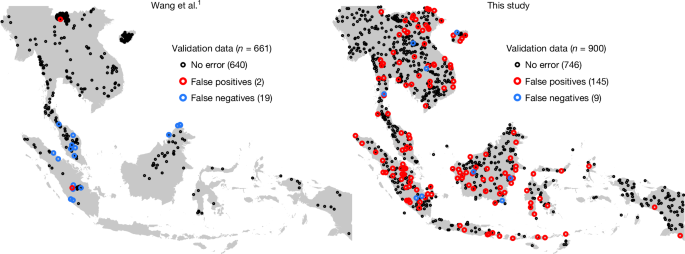Wang, Y. et al. High-resolution maps show that rubber causes substantial deforestation. Nature 623, 340–346 (2023).
Olofsson, P. et al. Good practices for estimating area and assessing accuracy of land change. Remote Sens. Environ. 148, 42–57 (2014).
Penot, E., Chambon, B. & Wibawa, G. In Proc. International Rubber Conference 497–532 (International Rubber Research and Development Board, 2017).
Descals, A. et al. High-resolution global map of smallholder and industrial closed-canopy oil palm plantations. Earth Syst. Sci. Data 13, 1211–1231 (2021).
Gaveau, D. L. et al. Slowing deforestation in Indonesia follows declining oil palm expansion and lower oil prices. PLoS ONE 17, e0266178 (2022).
Gaveau, D. L. et al. Rise and fall of forest loss and industrial plantations in Borneo (2000–2017). Conserv. Lett. 12, e12622 (2019).
Turubanova, S., Potapov, P. V., Tyukavina, A. & Hansen, M. C. Ongoing primary forest loss in Brazil, Democratic Republic of the Congo, and Indonesia. Environ. Res. Lett. 13, 074028 (2018).
Reuters. Forest loss from SE Asia rubber is up to 3 times more than thought—study. Reuters (18 October 2023).
Whitten, T., Soeriaatmadja, R. & Afiff, S. The Ecology of Java and Bali (Periplus Editions, 1996).
Sheil, D., Descals, A., Meijaard, E. & Gaveau, D. Validation dataset for ‘Rubber planting and deforestation’. Zenodo https://doi.org/10.5281/zenodo.10646349 (2025).
Wang, Y. et. al. High-resolution maps of rubber and rubber-related deforestation for Southeast Asia. Zenodo https://doi.org/10.5281/zenodo.8425153 (2023).


